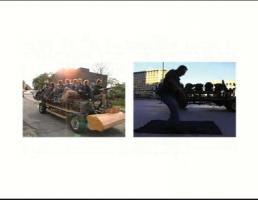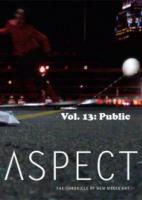Busycle
You are missing some Flash content that should appear here! Perhaps your browser cannot display it, or maybe it did not initialize correctly.

The Busycle is a 15-person pedal-powered bus that has traveled in neighborhoods throughout the United States. Anyone willing to pull their weight and pedal can be a Busycle passenger. It requires individuals to use their own will and physical strength to come together as a group to go from point A to point B. At the end of each route, story collection spaces were constructed and participants had the opportunity to tell a story about their lives and experiences. Storytelling is an extension of the unique dialogue that occurs between strangers as they pedal. As such, the Busycle and the interactions it facilitates become an urban play on the traditional campfire as a space for gathering and telling stories.
The Context
The Busycle is a response to the role that conventional approaches to transportation and top-down planning play in communities. Historically, these approaches have informed physical as well as social conditions in neighborhoods. Transportation issues can serve as litmus tests for community issues ranging from environmental racism to poor housing, and can be indicators of how much influence residents have on city and global policies and politics. On another level, the Busycle responds to the perilous relationship our lifestyles have with climate change and world politics.
The Busycle was conceived in the Roxbury neighborhood in Boston, the home of the Berwick Institute. In Roxbury, these issues were first documented in the 1950s, when plans for the construction of a major highway bisected the neighborhood. The highway’s planned construction resulted in the razing of thousands of homes, which, in conjunction with other attempts at urban renewal, tore the community’s urban fabric apart. More recently, the dismantling of an elevated train and its replacement with a bus service, as well as examples of environmental racism, continued the story.
The Busycle does not presume to be an answer to major ecological or socioeconomic questions, nor does it attempt to be a practical technology. What it does do is serve as the antithesis to the destructive precedents of the past and present. It is everything that top down is not. The Busycle is individuals using their own will and physical strength to come together as a group and go from point A to point B. Starting and ending points are ones they control.
How It Happened
The Busycle was constructed in Boston in the summer of 2005 when Boston-based artists, Heather Clark and Matthew Mazzotta, were awarded a residency through the Berwick Research Institute’s Public Art Incubator Program. Over a four month period, they formed a construction team of over 60 local participants. The Busycle is made of almost 100% recycled materials.


